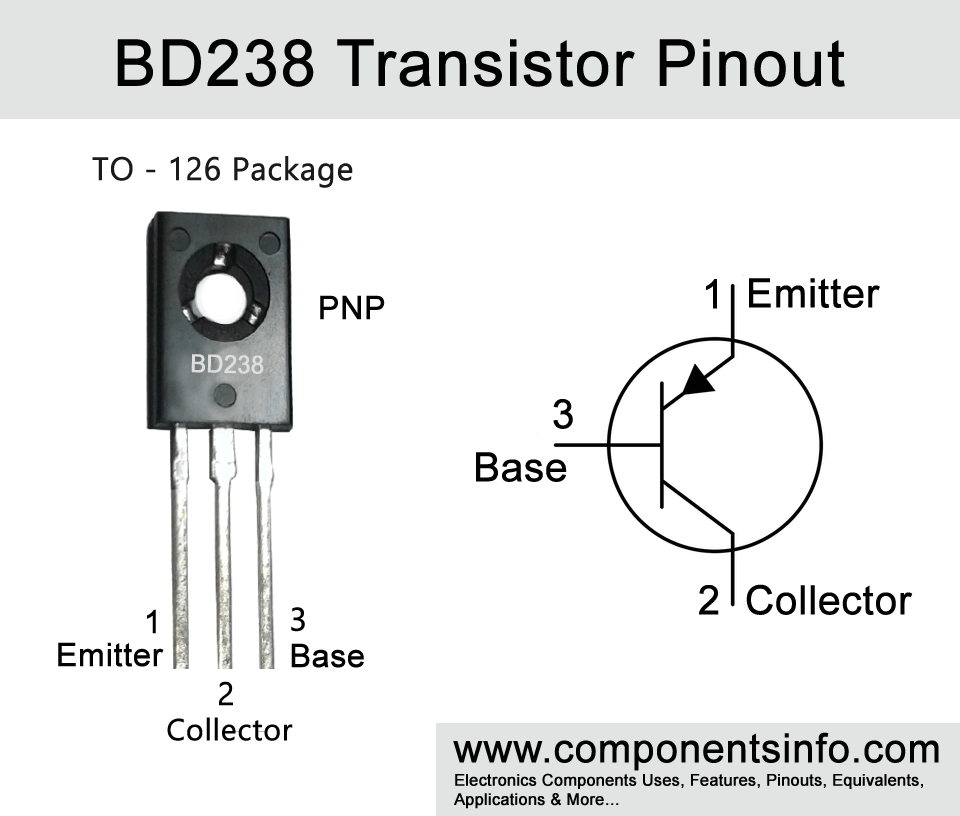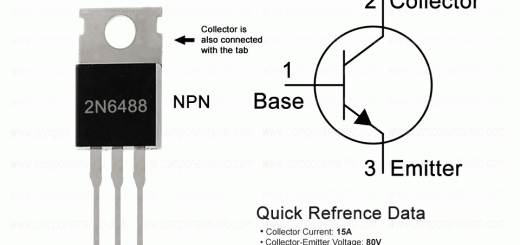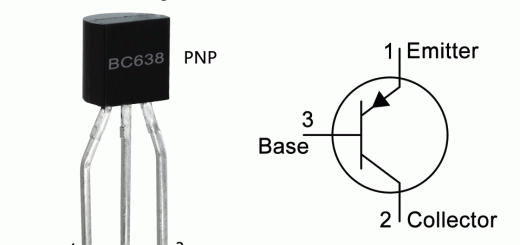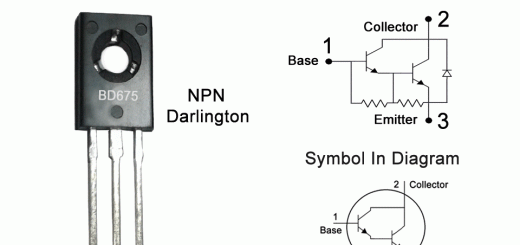BD238 Transistor Pinout, Features, Applications, Equivalents and More
BD238 is another transistor from the BD23X series of PNP transistors available in TO-126 package. Today we will discuss BD238 transistor pinout, features, applications, equivalents, where and how to use this transistor and other useful information.
Absolute Maximum Ratings:
- Package Type: TO-126
- Transistor Type: PNP
- Max Collector Current(IC): –2A
- Max Collector-Emitter Voltage (VCEO): –100V
- Max Collector-Base Voltage (VCBO): –100V
- Max Emitter-Base Voltage (VEBO): –5V
- Max Collector Power Dissipation (PC): 25W
- Max Transition Frequency (fT): 3 MHz
- Minimum & Maximum DC Current Gain (hFE): 40
- Max Storage & Operating temperature Should Be: -65 to +150 Centigrade
NPN Complementary:
The NPN complimentary of BD238 is BD237
Replacement and Equivalent:
BD684, BD338, MJE702, MJE271, MJE253, MJE250, MJE172, BD792, BD780, BD682, BD680, BD442, BD380, BD180, 2SB1168, 2SB1167, 2SB995, 2SB965, 2SB1373, 2SB1371, 2SB1361, 2SB1365, 2SB1345, 2SB1163, 2SB1161, 2SB1159, 2SB1157, 2SB1155, 2SB1153.
BD238 Transistor Explained / Description:
BD238 is PNP transistor of BD23x series, the other transistors of this series are BD234 and BD236. All the transistors in this series comes in TO-126 package. There is also NPN complementary series of these transistors are which contains BD233 (complimentary of BD234) BD235 (complimentary of BD236 and BD237(complimentary of BD238).
Looking at the absolute maximum ratings of BD238, the maximum collector-emitter voltage is -100V, maximum collector current is -2A, maximum collector-base voltage is -100V, max emitter-base voltage is -5V and max collector dissipation is 25W.
Now looking at the pin configuration of the transistor the first pin is “Emitter”, second pin is “Collector” and the third pin is “Base”.
Some Electrical Characteristics of the transistor are minimum DC current gain of 40, collector-emitter sustaining voltage is -80V, collector-emitter saturation voltage is -0.6V, base-emitter ON voltage is -1.3V and transition frequency is 3MHz.
The main applications or the applications for which this transistor is designed for are switching and amplification but it can also be used in variety of other applications which we will discuss in the next heading.
Where We Can Use it & How to Use:
As discussed this BD238 is mainly designed for switching and amplification purposes but can also be used for other purposes such as driver and controller circuits, power management circuits, signal amplification, voltage amplification, inverter circuits etc.
If you want to use this transistor as a switch or amplifier the procedure will be same as you use other BJT transistors.
Applications:
Solar Circuits
Battery charger circuits
Motor Drivers
Audio Amplifiers
PWM controllers
LED Drivers
DC to AC Converters
Dimmers
Battery discharging circuits
Inverter Circuits
Switching Circuits
Relay drivers circuits
Power converter circuits
Temperature Control Circuits
Variety of General Purpose Applications
Safe Operating Guidelines:
Here are the safe operating guidelines for the transistor.
- For safe operating it is recommended to not drive the transistor to its absolute maximum ratings and always stay 20% below from its max ratings.
- To follow the above 20% rule we should not drive the load of more than -1.6A because the maximum ratings of the transistor is -2A.
- Same goes with the collector-emitter voltage the maximum collector to emitter voltage is -100V therefore we do not drive load of more than 80V.
- We should also keep the temperature range between -55°C to 150°C, which means that the temperature around the transistor and the internal temperature should not go beyond the range that is -55°C to 150 °C, but we should care about the surrounding temperature only if we are using it in extreme temperature but if we are using it in normal temperature then we do not need to care about it. But the internal temperature can rise due to any mistake or fault, for example, if we overload it, or there is a short circuit somewhere in the circuit, etc. So it is important to keep this in mind.
Datasheet:
To download the datasheet just copy and paste the below link in your browser.
https://datasheetspdf.com/pdf-down/B/D/2/BD238_FairchildSemiconductor.pdf



